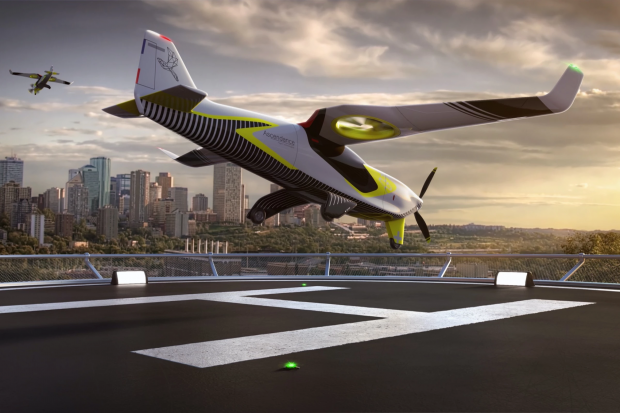
Breaking News
6.8 SPC vs. 300 Blackout: Powering Up the AR Platform
 Autism Study By McCullough Foundation Begins New Era of Free Scientific Inquiry
Autism Study By McCullough Foundation Begins New Era of Free Scientific Inquiry
 REVOLUTION DAY 8: Libertarians JOIN The Revolution
REVOLUTION DAY 8: Libertarians JOIN The Revolution
 US Government and Westinghouse $80bn Nuclear Reactor Deal
US Government and Westinghouse $80bn Nuclear Reactor Deal
Top Tech News
 Graphene Dream Becomes a Reality as Miracle Material Enters Production for Better Chips, Batteries
Graphene Dream Becomes a Reality as Miracle Material Enters Production for Better Chips, Batteries
 Virtual Fencing May Allow Thousands More Cattle to Be Ranched on Land Rather Than in Barns
Virtual Fencing May Allow Thousands More Cattle to Be Ranched on Land Rather Than in Barns
 Prominent Personalities Sign Letter Seeking Ban On 'Development Of Superintelligence'
Prominent Personalities Sign Letter Seeking Ban On 'Development Of Superintelligence'
 Why 'Mirror Life' Is Causing Some Genetic Scientists To Freak Out
Why 'Mirror Life' Is Causing Some Genetic Scientists To Freak Out
 Retina e-paper promises screens 'visually indistinguishable from reality'
Retina e-paper promises screens 'visually indistinguishable from reality'
 Scientists baffled as interstellar visitor appears to reverse thrust before vanishing behind the sun
Scientists baffled as interstellar visitor appears to reverse thrust before vanishing behind the sun
 Future of Satellite of Direct to Cellphone
Future of Satellite of Direct to Cellphone
 Amazon goes nuclear with new modular reactor plant
Amazon goes nuclear with new modular reactor plant
 China Is Making 800-Mile EV Batteries. Here's Why America Can't Have Them
China Is Making 800-Mile EV Batteries. Here's Why America Can't Have Them
Ascendance proposes a long-range, low-emission hybrid VTOL air taxi

Right now, the entire electric VTOL scene is a house built on a foundation of faith. Faith that the hordes of researchers beavering away on next-gen battery technology will achieve an enormous energy density breakthrough, or faith that hydrogen fuel cell powertrains will prove safe, reliable and practical in an aviation context.
Both seem likely, eventually, but the urban air taxi industry is pushing to be up and running within five years, and right now there's no powertrain on the market that can keep these energy-intensive vertical-lift birds in the air long enough to be practical in a commercial sense.
France's Ascendance sees an opportunity for an intermediate step. The company was founded by four ex-Airbus employees who worked on the groundbreaking E-Fan project, which back in 2015 became the first electric aircraft to cross the English Channel. Now, the team is working on a hybrid initiative to make long-range, low-emissions VTOL flight a reality even before the battery and hydrogen guys make their breakthroughs.
The company's first project is the Atea aircraft shown at the top. While many eVTOL designs use wings, none looks as close to a standard small plane as this one. The fuselage, forward propeller, and T-shaped tail look entirely familiar instead of alien and sci-fi like some of the competition. It's clearly designed to be just as comfortable taking off and landing on airstrips as vertipads.

 China Innovates: Transforming Sand into Paper
China Innovates: Transforming Sand into Paper

